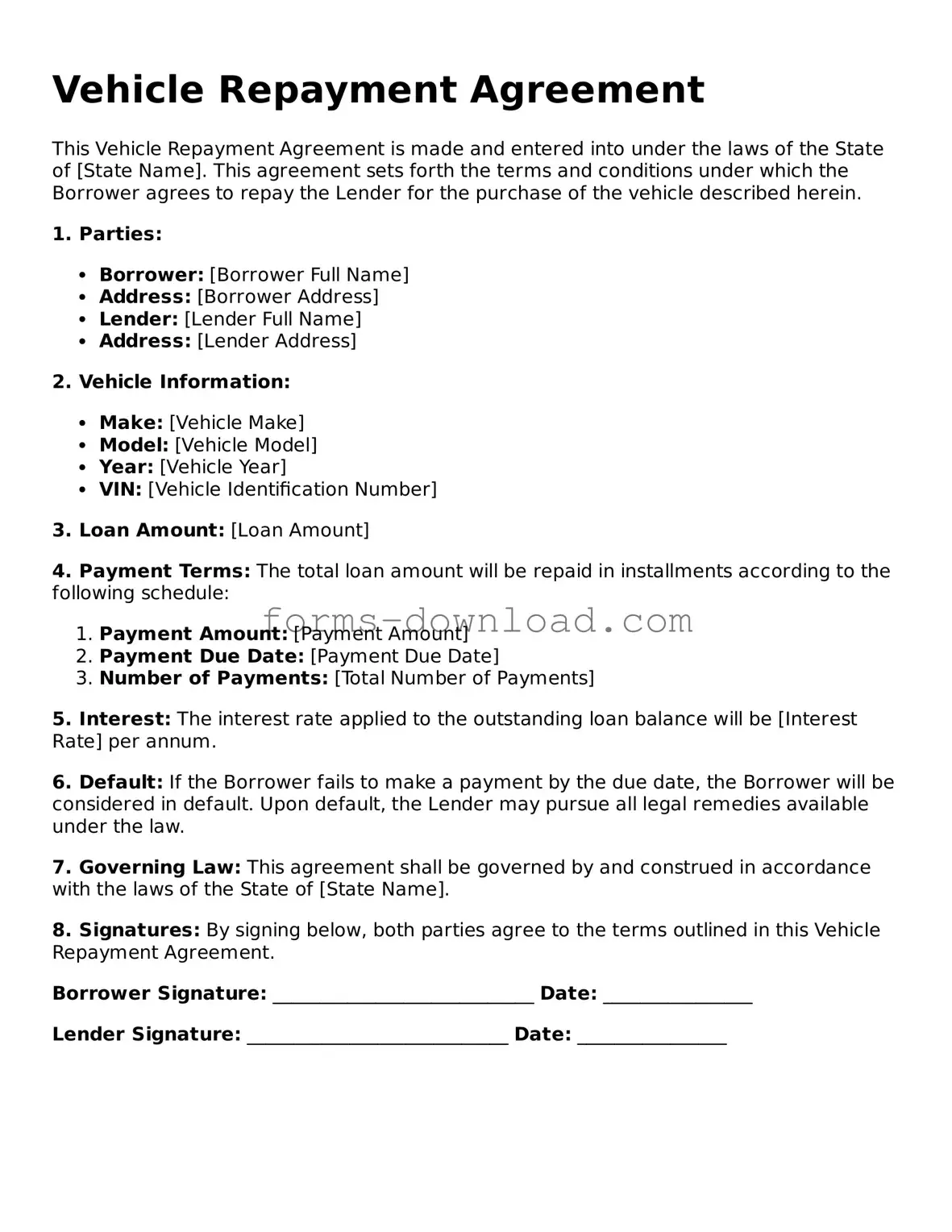Vehicle Repayment Agreement
This Vehicle Repayment Agreement is made and entered into under the laws of the State of [State Name]. This agreement sets forth the terms and conditions under which the Borrower agrees to repay the Lender for the purchase of the vehicle described herein.
1. Parties:
- Borrower: [Borrower Full Name]
- Address: [Borrower Address]
- Lender: [Lender Full Name]
- Address: [Lender Address]
2. Vehicle Information:
- Make: [Vehicle Make]
- Model: [Vehicle Model]
- Year: [Vehicle Year]
- VIN: [Vehicle Identification Number]
3. Loan Amount: [Loan Amount]
4. Payment Terms: The total loan amount will be repaid in installments according to the following schedule:
- Payment Amount: [Payment Amount]
- Payment Due Date: [Payment Due Date]
- Number of Payments: [Total Number of Payments]
5. Interest: The interest rate applied to the outstanding loan balance will be [Interest Rate] per annum.
6. Default: If the Borrower fails to make a payment by the due date, the Borrower will be considered in default. Upon default, the Lender may pursue all legal remedies available under the law.
7. Governing Law: This agreement shall be governed by and construed in accordance with the laws of the State of [State Name].
8. Signatures: By signing below, both parties agree to the terms outlined in this Vehicle Repayment Agreement.
Borrower Signature: ____________________________ Date: ________________
Lender Signature: ____________________________ Date: ________________
